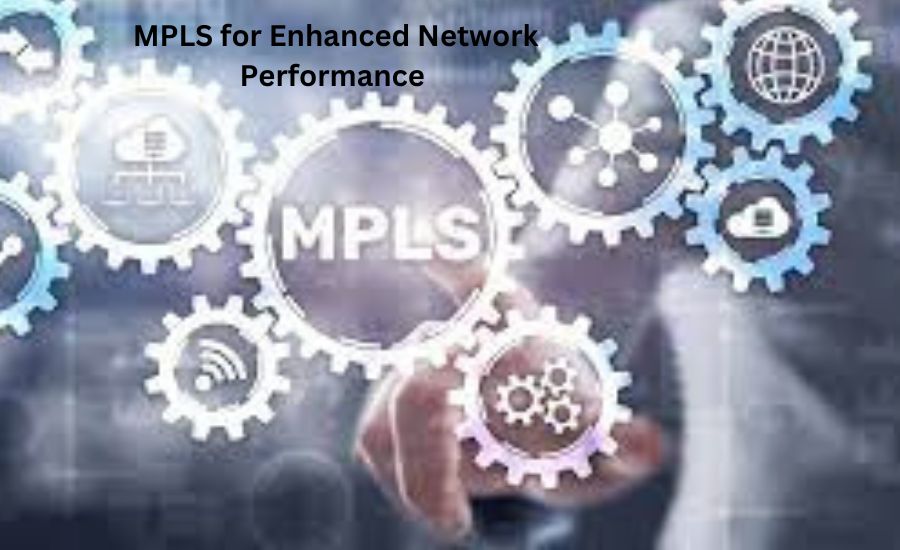Introduction
In today’s fast-paced digital landscape, businesses rely heavily on efficient and reliable networking solutions to manage their data traffic. One such solution that stands out is Multiprotocol Label Switching (MPLS). Organizations can optimize network performance by leveraging MPLS, ensuring seamless data flow and improved service delivery. Let’s delve into the core aspects of MPLS and understand how it can significantly enhance network performance.
Understanding MPLS
MPLS, or Multiprotocol Label Switching, is a versatile technology that improves the efficiency of data packet transmission across a network. Traditional IP routing relies on lengthy network addresses to direct data, which can be slow and cumbersome. In contrast, MPLS uses short path labels to guide data packets, making the process more efficient and less prone to errors. Implementing MPLS in a network allows for faster data transfer rates, reduced latency, and enhanced overall performance.
This technique assigns labels to data packets at the network’s entry point, directing them through predefined paths based on these labels. The result is a streamlined, logical flow of information that minimizes the need for complex and resource-intensive routing table lookups. Instead of navigating the network using traditional IP addresses, data packets traverse the network using these simplified paths, significantly improving speed and reliability.
How MPLS Boosts Performance
By utilizing MPLS, businesses can experience multiple enhancements in network performance. One of the primary benefits is improved bandwidth utilization. Unlike conventional routing methods that may lead to inefficient bandwidth use, MPLS optimizes the available bandwidth, allowing higher traffic volumes without compromising network efficiency.
Lower latency is another crucial advantage of MPLS. Data packets reach their destination more quickly because they follow predetermined paths, reducing the time spent in transit. This reduction in latency is particularly beneficial for applications that require real-time data transmission, such as VoIP and video conferencing, which depend on swift and reliable communication.
Service delivery is also significantly enhanced through the use of MPLS. With its ability to prioritize specific types of traffic, MPLS ensures that critical data receives the necessary resources for timely delivery. This prioritization is vital for maintaining the quality of service (QoS) and ensuring that essential operations run smoothly.
Advantages of MPLS
- Improved bandwidth utilization
- Lower Latency
- Enhanced service delivery
- Scalability
Beyond its core performance benefits, MPLS offers several other advantages. For example, MPLS networks are highly scalable, making it easier for businesses to expand their network infrastructure as their requirements grow. This scalability ensures that organizations can adapt to changing demands without overhauling their network setup.
Additionally, MPLS enables better traffic management by creating Virtual Private Networks (VPNs) and Layer 2 circuits, offering a failsafe mechanism that adds an extra layer of security. The predetermined paths used in MPLS help maintain network integrity, reducing the risk of unauthorized access and data breaches.
Another advantage of MPLS is its reliability. Using predefined routes minimizes the chance of network congestion and bottlenecks, ensuring continuous and smooth data flow. This reliability is crucial for maintaining business continuity, particularly when downtime can lead to significant financial losses.
MPLS vs. Other Technologies
MPLS’s superior performance is evident compared to traditional IP routing and VPN technologies. While IP routing relies on destination-based addressing, which can be slow and inefficient, MPLS uses predefined paths to expedite data transmission. This fundamental difference enhances the speed and reliability of network communication.
VPNs, while secure, often come with higher latency and less efficient bandwidth utilization due to their encryption and decryption processes. On the other hand, MPLS avoids these pitfalls by maintaining the integrity and speed of data transmission through its streamlined path-labeling mechanism. This efficiency makes MPLS a preferred choice for businesses that require a balance of speed and security without compromising on either.
MPLS also offers greater versatility than traditional networking technologies. Its ability to support multiple types of traffic—voice, video, and data—and prioritize them accordingly adds to its effectiveness. This makes MPLS a more holistic solution that meets modern businesses’ diverse network demands.
Implementing MPLS
Several factors must be considered when implementing MPLS. Budget constraints and existing infrastructure are critical considerations, as they will impact the overall cost and complexity of the deployment. Businesses must assess their current network setup to determine how seamlessly MPLS can be integrated and whether any upgrades are necessary.
Scalability is another crucial factor. MPLS should be implemented with future growth in mind, ensuring that the network can expand as the business grows. Working with experienced professionals who can design an MPLS network that accommodates current needs while being flexible enough to scale up accordingly is essential.
Security is also paramount when implementing MPLS. Organizations should ensure that their MPLS setup includes robust security measures to protect against potential threats. Collaborating with a reliable service provider can guarantee that the MPLS network is secure, efficient, and tailored to the business’s specific needs.
Lastly, ongoing maintenance and optimization are vital for an MPLS network’s consistent performance. Regular monitoring and updates ensure that the network runs at peak efficiency, delivering the high performance and reliability that MPLS promises.
Conclusion
Multiprotocol Label Switching (MPLS) is a powerful solution for enhancing network performance. Its ability to utilize bandwidth efficiently, reduce latency, and improve service delivery makes it invaluable for businesses aiming to optimize their network infrastructure. By understanding the core principles of MPLS and implementing them thoughtfully, organizations can create a robust, scalable, and efficient network capable of meeting the demands of today’s digital economy.
Stay connected with: outlookblogs





